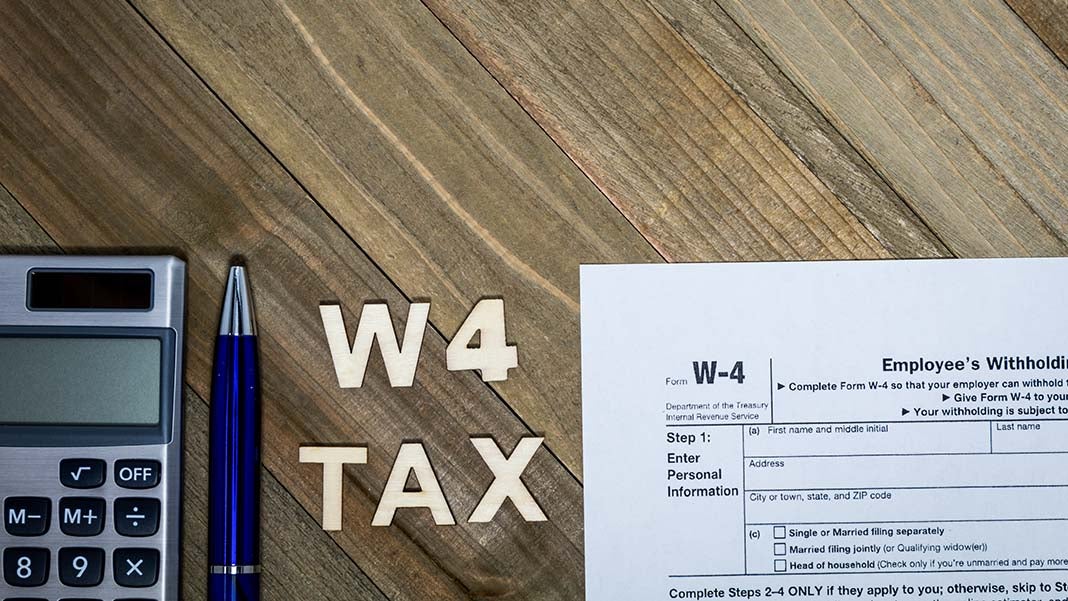How the New 2020 IRS W-4 Form Affects Small Business Employers and Employees
By: Wagepoint

Outside of fun festivities—and the fact that it’s the beginning of an entirely new decade—most people are excited for 2020. A new year means new beginnings, new goals and, in the case of the Internal Revenue Service (IRS), new tax paperwork.
If you haven’t heard, the IRS has given Form W-4 a major facelift. After two draft versions were issued earlier this year, the IRS unveiled its long-awaited 2020 Form W-4 in December 2019. The new W-4 is meant to make accurate income tax withholding easier for employees starting in 2020.
What is Form W-4?
If you guessed that Form W-4 was a tax form, you are 100% correct. The U.S. government requires all employees to complete IRS Form W-4 at the start of every new job. Now retitled as the Employee’s Withholding Certificate, the information collected on this form lets employers know exactly how much federal income tax to withhold (take out) from each employee’s paycheck.
Why is there a new form?
A document overhaul was made to comply with the Trump administration’s changes to the federal tax code related to the Tax Cuts and Jobs Act. The new form design makes it easier for employees to complete and increases the transparency and accuracy of the withholding system.
How the new W-4 affects employees
The new W-4 is intended to help make it easier for employees to manage their withholding amounts. There are three main ways this is accomplished as outlined below.
One of the main reasons that a W-4 is so important is that it’s the first step in ensuring that the W-2 an employee receives for income taxes is accurate. No one wants a surprise at tax time. Additionally, paying the right amount of taxes, like Social Security and Medicare, helps ensure that employees can access these services when needed.
1. No more withholding allowances
Indicated by the title change, the new W-4 no longer includes allowances. Allowances were used to account for additional income, deductions and tax credits. Previously, the amounts employees could withhold corresponded with the amount of each personal exemption.
However, due to changes in the law, employees can no longer claim personal exemptions or dependency exemptions. Instead, the redesign includes five lines that let employees adjust their withholding with varying levels of accuracy, privacy and ease.
2. Straightforward design
While the new W-4 uses the same underlying information as the old design, it replaces complicated worksheets with more simple questions that make accurate withholding easier. The new W-4 is divided into five steps:
- Step 1— Enter personal information.
- Step 2 — Indicate multiple jobs or if his/her spouse works.
- Step 3 — Claim dependents.
- Step 4— Make other adjustments including for:
- Step 4(a)— Investment and retirement income.
- Step 4(b)— Deductions other than the standard deduction.
- Step 4(c)— Any extra tax withholding per pay period.
- Step 5— Sign the form.
3. Only two required steps for most employees
Step 1 and Step 5 are required. Steps 2 to 4 are optional and only apply if an employee’s tax situation has changed. In the case that additional steps do apply, employees are encouraged to complete the form accordingly so that their withholding more accurately matches their tax liability.
When should employees increase or decrease withholding?
One way that employees can determine if they need to adjust their withholding amounts is by doing a paycheck checkup using self-service tools provided by the IRS.
Employees should consider increasing withholding if:
- They hold more than one job at a time and his or her spouse both have jobs.
- They have income from sources that are outside of employment that are not subject to withholding.
Employees could decrease withholding if:
- They are eligible for income tax credits like the child tax credit or credit for other dependents.
- They are eligible for deductions other than the basic deduction, such as itemized deductions, the deduction for IRA contributions or the deduction for student loan interest.
How the new W-4 affects employers
Not every employee is required to complete a new form. Although big changes to the form were made, the IRS designed the withholding tables to work with a prior year form or the 2020 form.
The main takeaway: Only new hires in 2020 and employees who want to make changes to their withholding in 2020 are required to fill out the newly designed W-4.
How to help your employees
Since the 2020 Form W-4 is drastically different from its previous version, making the transition to the new form may be challenging for workers. Clearly communicating these changes to employees will help reduce the number of headaches and hiccups when completing the form.
New year, new W-4
There are big tax implications if employees fail to turn in a W-4 or if they don’t include the right number of allowances on the form. For both employees and employers, clearly understanding the changes that were made to the new 2020 Form W-4 will help ensure your tax filing goes off without a hitch.
The advice we share on our blog is intended to be informational. It does not replace the expertise of accredited business professionals.
Author: Mel Ly is a content writer with a keen interest in Wellness, People & Culture and the Employee Experience. When she isn’t writing, she spends her time sipping on lattes, playing volleyball, studying into different personality frameworks (her MBTI: ESFP), and bugging her partner.












